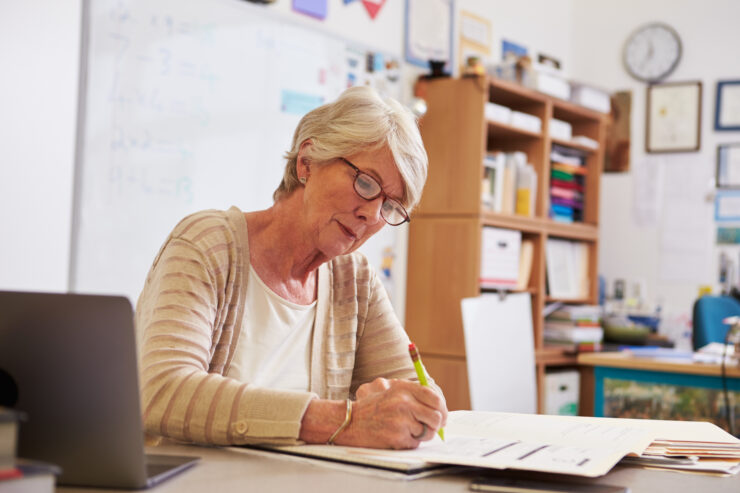Are we bridging the gap from brain scan to lesson plan?
A vision for integrated education and the science of teaching and learning

Educational neuroscience is part of the science of learning. As an educational neuroscientist, I seek to promote dialogue between educators and researchers. An understanding of neural mechanisms of learning can prove useful to practitioners in the classroom, and classroom challenges can guide new research agendas. This translational work is progressing in the UK, among other countries, and teaching innovations have been inspired by neuroscience.
Building bridges between educators and researchers
Some researchers point to a big gap between research in the science of teaching and learning, on the one hand, and classroom practice, on the other: the so-called gap from brain scan to lesson plan. Much remains to be done to bridge this gap, but the emerging dialogues are encouraging. A national survey by the UK think tank Learnus found that teachers are enthusiastic about the potential of educational neuroscience and open to learning more about it – so long as it can be integrated into their continuing professional development. Some teachers already apply neuroscience principles in their day-to-day practice. However, workload, funding, and classroom behaviour are often more pressing concerns for teachers than pedagogy.
“Teachers are enthusiastic about the potential of educational neuroscience.”
There have been promising developments in bridge building. The Education Endowment Foundation, a UK organisation gathering evidence on what works in education, commissions Teacher Choices trials to evaluate the differential effectiveness of everyday classroom practices. The UK Chartered College of Teaching conducts surveys on teachers’ research priorities. And science-of-learning content is now included in the UK government’s syllabus for teacher training.
Innovation in response to classroom challenges
Our research centre led a project that started with a classroom challenge. We used cognitive neuroscience to inspire a new classroom activity co-developed with teachers to address that challenge. Through evaluation trials, we demonstrated its benefit over current teaching practice.
Primary-age children sometimes struggle to learn scientific concepts that are counterintuitive, for example, that the world is round even though it seems flat. And in mathematics, it can be difficult to learn seemingly inconsistent facts such as that 4 is greater than 3, but 1/4 is less than 1/3, and -4 is less than -3.
“Neuroscience-inspired innovation can work in the classroom.”
Neuroscience suggests that children need inhibitory control skills to suppress intuitive or inconsistent knowledge when learning and using new scientific and mathematical information. Children can be trained in inhibitory control skills, but the training must be embedded in the content where the skills are to be used – within science and mathematics. We developed the Stop&Think classroom activity to train 8- to 10-year-olds in these skills. Over an academic term, children participated in three 15-minute sessions a week, in place of usual instruction. This led to 2 months’ gain in learning in science and 1 month in mathematics compared with children who didn’t receive the training. This was shown in both an efficacy trial with 6,000 children and an effectiveness trial of 14,000 children. This demonstrates that neuroscience-inspired innovation can work in the classroom.
Integrating science into the education system
Innovation is part of translational science. Industries and medicine alike have research and development (R&D) wings that explore which new products or approaches might be better. While powerful and important, innovation is just one role in integrating the science of teaching and learning into education at a national level. In our vision of a national system for integrating research and practice, educational neuroscience serves as an R&D wing to support the work of teachers.
In medicine, R&D drives the development of new drugs, medical devices, diagnostic tools, and treatment methods. Clinical trials evaluate the safety and efficacy of medical interventions. In our vision, educational neuroscience plays an analogous supporting role for teaching practice, by building knowledge, suggesting new methods, and scoping for future developments that address the challenges identified by educators.
In this vision, there is a continuous dialogue between educators and researchers. Research literacy and an understanding of the science of learning and development are embedded in teacher training, with knowledge and skills updated through continuing professional development. Teachers are encouraged to evaluate their own practice in the classroom.
Furthermore, government funding facilitates the accumulation of research-based evidence concerning mechanisms of learning. Evaluations identify approaches that support educational outcomes and wellbeing, as well as factors that have a negative effect. An organisation serves as a gatekeeper to ensure the quality of evidence regarding what works in the classroom, and to disseminate research for practice – in the UK, the Education Endowment Foundation already fulfils this purpose.
Finally, schools and their networks are organised partners in research. Structures allow the latest classroom challenges and policy priorities to guide research agendas. Basic research contributes to educational innovation as researchers and teachers co-create new learning activities. Research communication furnishes students and teachers alike with insights into the workings of their own brains, buttressing learner and teacher agency.
We are convinced that this vision is attainable. It would provide a foundation to maximise the contribution of research to improving the educational outcomes and wellbeing of our children.
Footnotes
This article is based on the paper ‘Evidence, Policy, Education and Neuroscience – The State of Play in the UK’ that was recently published in the journal Mind, Brain, and Education by members of the University of London Centre for Educational Neuroscience. It is the first paper in the journal’s special new article format, Practitioners’ Perspectives. This format aims to help bridge the research–practice gap by offering a new platform to educators and practitioners to discuss issues linked to implementing and contextualising research findings in practice and policy. The article is also part of the Share Your Science series, a collaboration between BOLD and Mind, Brain, and Education. In the series, authors of articles published in Mind, Brain, and Education write an accompanying BOLD article to share their insights with a wider audience.

